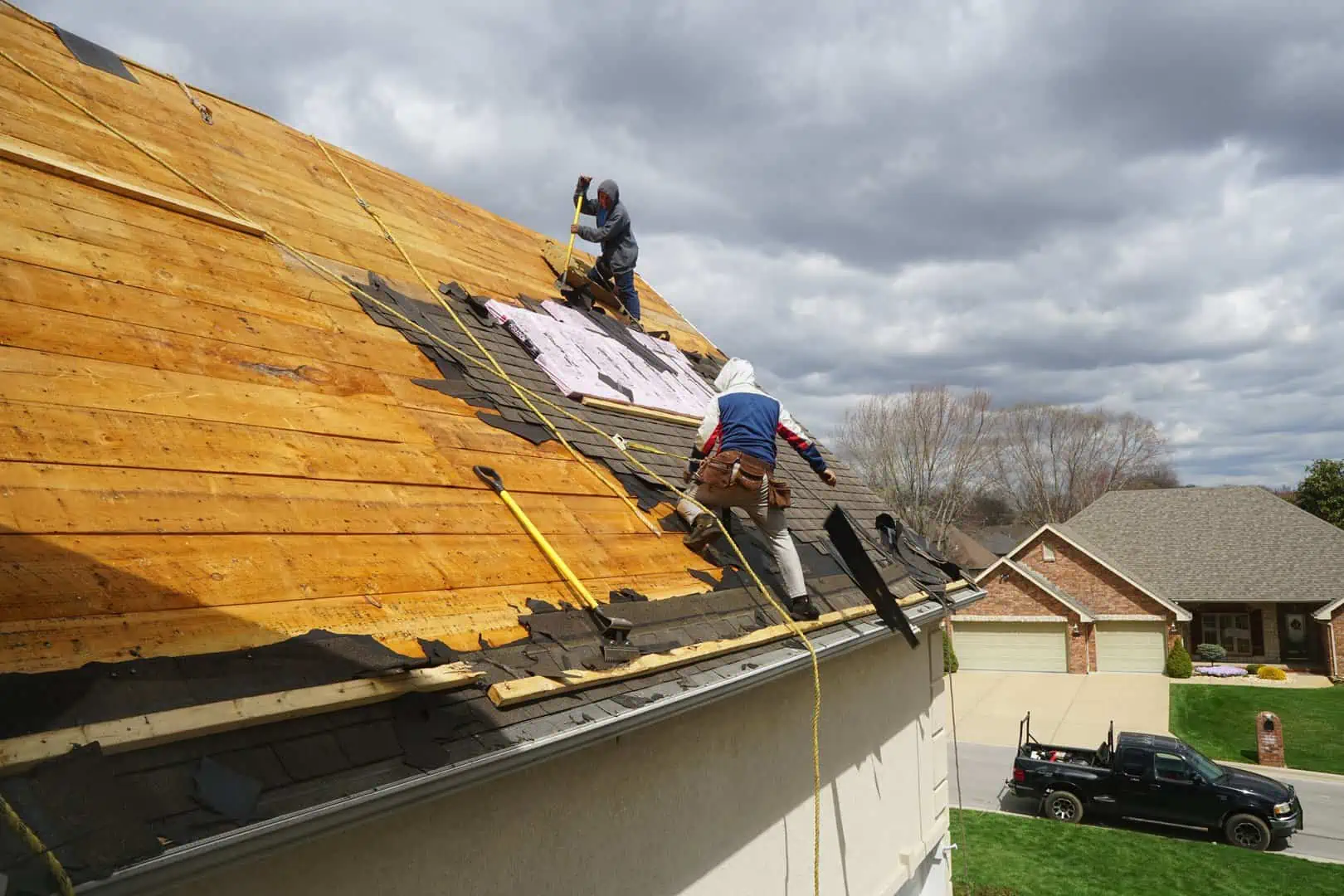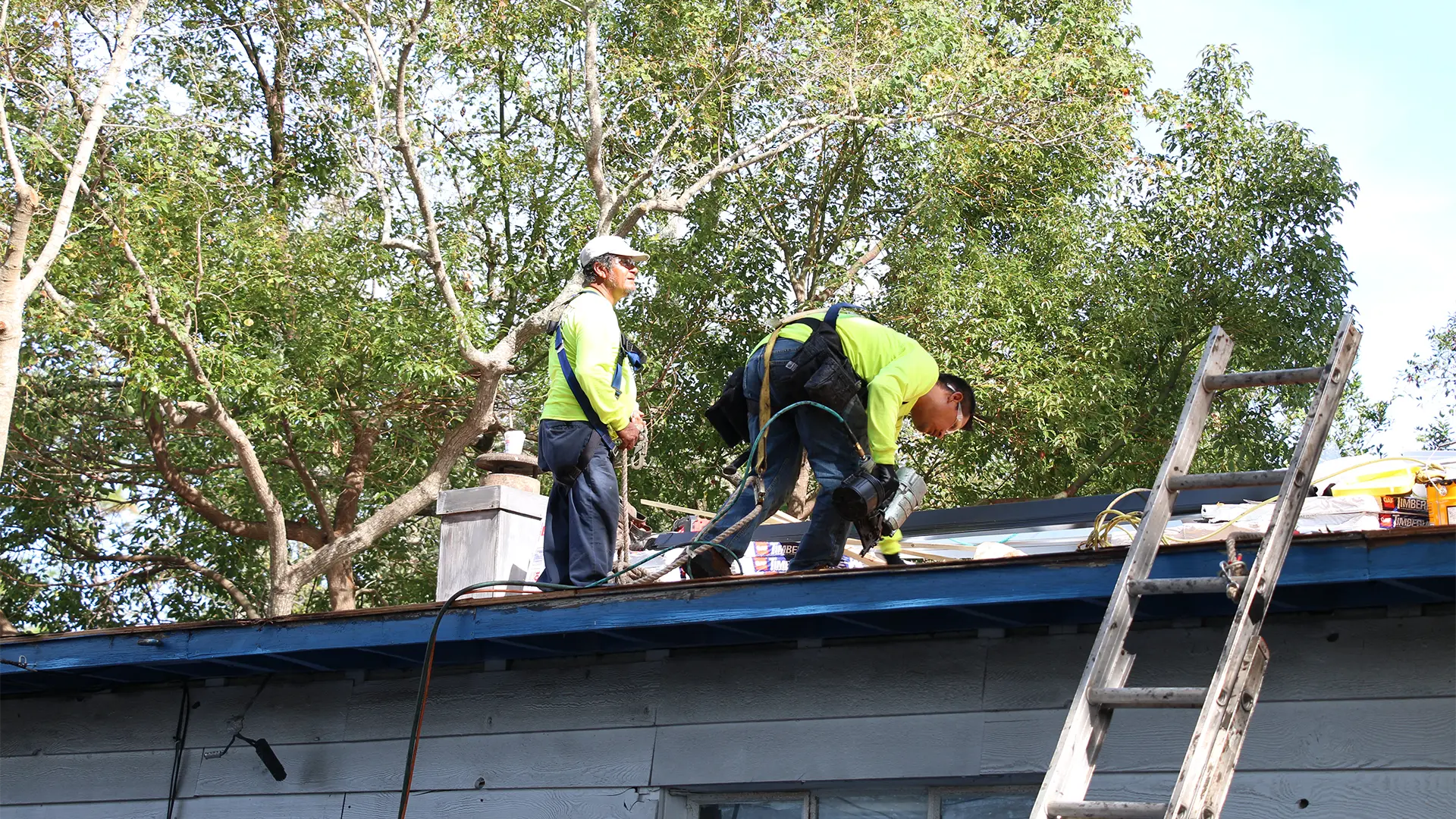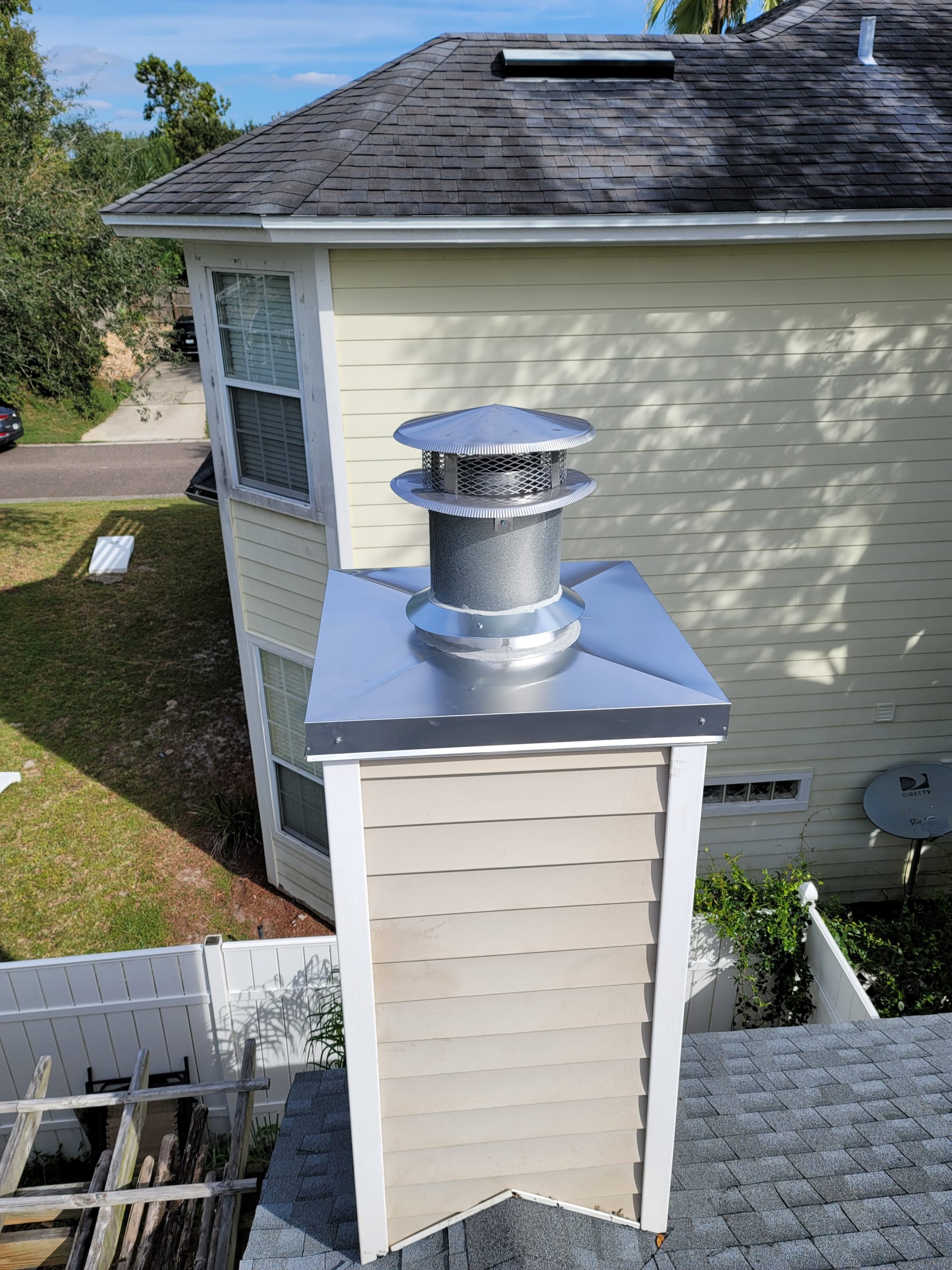When will homeowners insurance cover roof damage?
Homeowners insurance typically covers roof damage caused by sudden and accidental events, often termed “covered perils.” Here are some common perils that are typically covered by homeowners insurance policies: lightning, fire, wind, hail, and falling objects. It’s important to note that homeowners insurance policies will vary based on location. If you live in a location where tornadoes are common, it’s possible your policy will exclude certain wind related damage.
How much will homeowners insurance cover?
The amount your policy pays out will be determined by a few different factors. The type of policy determines how much you will be paid. The two most common policys are Actual Cash Value (ACV) and Replacement Cost Value (RCV).
Actual cash value policy
An ACV policy reimburses you for the depreciated value of your damaged roof. Imagine your 15-year-old roof cost $10,000 new, but due to wear and tear, it’s now worth only $5,000. That’s the amount you’d receive for repairs or replacement under ACV. Since depreciation is factored in, you might not receive enough to fully replace your roof. You might need to cover the difference out-of-pocket. ACV policies will typically have lower premiums at the cost of a lower payout the older your roof is.
Replacement cost value policy
A RCV policy covers the cost to replace your damaged roof with a new one of similar quality, regardless of the age of your existing roof. Going back to the 15-year-old roof example, with RCV, you’d get closer to $10,000 (depending on current market rates for similar roof materials). The key benefit is that you’re not penalized for depreciation. This ensures you have enough money to fully replace the damaged property, rather than just getting back its depreciated value. RCV coverage may not be automatically included in your homeowners insurance policy. You might need to specifically request it or pay extra to add it. Some RCV policies have a limit on the total amount your insurance company will pay for a replacement. Be sure to review your individual policy for the details. Overall, an RCV policy offers valuable protection by ensuring you have enough funds to fully replace your insured property after a covered loss.
How to get insurance to pay for a new roof
Let’s say you noticed your roof was damaged by a recent storm, which falls under a covered peril on your homeowners insurance policy. Here are some steps you should take to get your homeowners insurance to help pay for a new roof.
Review Your Policy and Document the Damage
The first step should be to review your policy and make sure the damage done to your roof was caused by a covered peril. A covered peril is an event or cause of damage that your policy explicitly states it will financially protect you against. If the damage was caused by a covered peril you are good to begin the process of contacting your homeowners insurance company and getting a payout. Make sure to take clear and detailed photos and videos of the roof damage from various angles. If possible, capture both the exterior and interior damage (if any). Make sure to be safe and don’t walk on your roof if you’re unsure about it’s condition. If immediate repairs are necessary contact a licensed roofing company to schedule a temporary repair, they will also be able to take better pictures of your roof. You can also get an estimate on the cost of fixing your entire roof while they make the temporary repairs.
Contact your homeowners insurance company
Contact your insurance company or agent as soon as possible to report the roof damage. They will guide you through the claims process. Be prepared to give details like the date the damage occurred, the cause (if known), and any safety hazards. The insurance company will likely send out an adjuster to assess the damage and determine the amount of money you are owed. The adjuster will create a report detailing the extent of the damage and the estimated cost of repairs or replacements.
Obtain multiple estimates from roofing companies
It’s a good idea to obtain different quotes from roofing contractors, then you can compare them with the adusters report and note any differences in the estimates. Carefully review the adjuster’s report. If you notice any large discrepancies between the payout amount and the cost of repair or replacement you may need to negotiate with your insurance company.
Negotiate your payout if necessary
If you disagree with their assessment, politely discuss your concerns with your insurance agent and provide your contractor estimates for support. There might be room for negotiation on the repair or replacement cost. Be prepared to discuss the details with your insurance agent. Remember depending on the age of your roof and type of insurance policy you have will determine how much you are paid out. If you’re noticing the payout amount does not cover the entire roof repair or replacement, it may be because your roof is older and you have an ACV policy, which pays out based on the depreciated value of your roof not the full replacement cost.
Hire a roofing company to fix your roof and obtain your insurance payout
Once the claim is approved, select a licensed and insured roofing contractor with a good reputation. Ensure the roofing contract clearly outlines the scope of work, materials used, warranty details, and payment schedule. Sometimes your insurance will send you some of your settlement money early so you can begin work on your roof, due to the fact that having a roof is important to your safety. Usually you will receive the rest of your money once the roof is finished. The final amount will be the settlement amount minus your deductible.
Additional Tips
Dealing with insurance companies can sometimes be a hassle, here are some tips to ease the process:
- Maintain good records: Keep copies of all paperwork related to the claim, including photos, videos, reports, estimates, and the final roofing contract.
- Stay informed: Communicate clearly with your insurance agent throughout the process. Don’t hesitate to ask questions.
- Know your policy: This is crucial. Understand what covered perils your policy includes (e.g., hail, storm damage) and any exclusions that might apply (e.g., earthquakes, floods).
- Act Quickly: Report the damage to your insurance company as soon as possible. Delaying a claim might raise red flags and slow the process.
Conclusion
Dealing with roof damage and insurance is never a fun time, with this guide hopefully you will better understand the process and what you can do to make it a little bit easier. Remember to document everything and act quickly when your roof is damaged. Study your home’s insurance policy and make sure you’re getting everything you are entitled to. Make sure to choose a reputable roofing company and obtain multiple estimates. If you’re Jacksonville or surrounding areas feel free to contact us for a free inspection and estimate.


